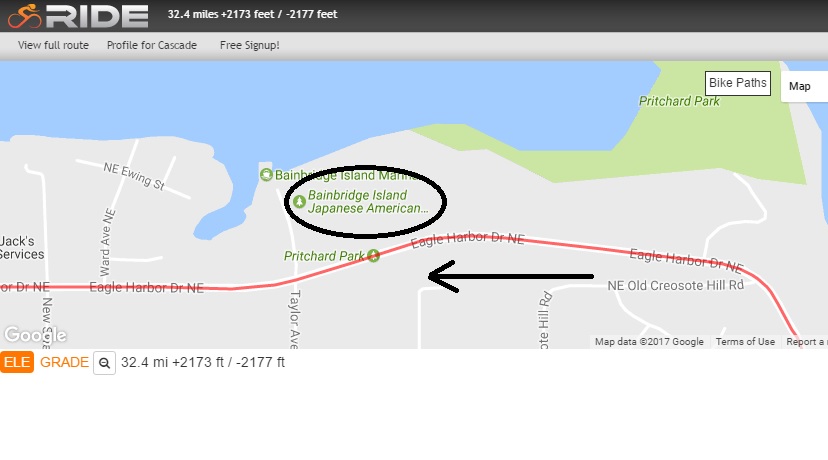As the President Trump administration proceeds with its highly restrictive immigration policies, many are drawing parallels with the internment of Japanese-Americans during World War II.
If you’re not too cold, or too tired, or too hungry at the end of this Sunday’s 32-mile Chilly Hilly bike ride (presented by Seattle’s Cascade Bicycle Club) on Bainbridge Island, you can stop at a park that memorializes that black mark on American history.
The bicycle route passes the Bainbridge Island Japanese American Exclusion Memorial just before Mile 29 on Eagle Harbor Drive NE.
This is where a ferry picked up 227 Japanese Americans who had been given six days’ notice to leave their homes on the island. They ended up at the fairgrounds in Puyallup before relocation to the Minidoka War Relocation Center in Idaho or the dusty Manzanar Internment Camp in an arid and isolated part of California.
They were the first Japanese Americans to be uprooted at the beginning of World War II in spite of the fact that many were US citizens and had lived there for generations.
Last Sunday, Jan. 19, marked the 75th anniversary of FDR’s signing of Executive Order 9066, which enabled the incarcerations. The Japanese Americans were ferried from Bainbridge Island on March 30, 1942.
In all, the US government sent about 120,000 Japanese Americans to internment camps during World War II. Forty-six years later, President Reagan signed the Civil Liberties Act that paid reparations to those who were sent to the camps.
Today, the point of deportation is marked by the Story Wall that has photographs, names and quotes from those removed from the island.
Where to find it
The Bainbridge Island Japanese American Exclusion Memorial is located at the westside of Pritchard Park, on the right side of the road just before Mile 29 of the bike route. The address is 4192 Eagle Harbor Drive.
More: Dorothea Lange’s censored photographs from Japanese American concentration camps



Recent Comments